Hey there, everybody, and welcome to this presentation on diagnosing anxiety and panic in the DSM 5tr. I’m your host Dr. Donnelly Snipes in this presentation.Very briefly, we’re going to review the diagnostic criteria for anxiety disorders or at least most of them in the DSM 5 tr.So let’s talk a little bit about anxiety disorders in general, when we’re talking about anxiety disorders, we need to remember that fear and anxiety may be expressed as fighting agitation, tantrums fleeing freezing fawning clinging, or withdrawal, or what I call the final f, Which is um politely forget about it, because people, just don’t have any more energy left, so they kind of withdraw anxiety.Disorders differ from each other regarding the types of objects or situations that cause fear, anxiety, or avoidance behaviors and the associated beliefs.Anxiety disorders represent a response that is not developmentally culturally or, I also add, contextually normative in terms of intensity or duration.So when we’re looking at what somebody is anxious about, we want to examine, obviously culture and development, something that a five-year-old is afraid of is not necessarily going to be the same thing that a 25-year-old is afraid of.We also want to look at context, though, something that uh, you’re, afraid of in one context, you may not be afraid of in another like for children being around strangers may not be stressful for them when they are at home or when they’re.At school, somebody comes in to do a presentation versus when they are alone and they don’t have a caregiver around.Interestingly, from August 2020, through December 2020, the percentage of adults reporting symptoms of an anxiety disorder rose from 31 4 to 36 9.Now, when you go through the DSM and you start adding up the prevalence of these anxiety disorders, it is really hard to get to a number anywhere close to 36 9. So the numbers in the DSM and the numbers in the uh national health survey, don’t seem to jive very well.We also have to remember that during 2020 we were at the beginning of the pandemic, so there was more anxiety.You would expect that, but even the 31 percent that it was before 2020 seems to be higher than what is identified in the DSM.So I think that’s interesting the anxiety chapter in the DSM 5tr, just like in the DSM 5, is arranged in order of diagnosis which appears in children first, so separation, anxiety, and disorder appear first, and generalized anxiety.The disorder is down a little way, whereas you might expect some of the quote more common disorders to be first, but that’s not how the DSM is arranged.However, in this presentation, I did put generalized anxiety first, when we talk about generalized anxiety, we’re talking about excessive anxiety most days for six or more months, and the anxiety is about a variety of things.It’s not just about one particular thing like health or an individual or a phobia.It is about a variety of things.The worry, in addition to being excessive for the person’s developmental age, culture, and context.The worry is difficult to control the anxiety or the feeling of anxiety is associated with three or more symptoms in adults or one or more symptoms in children, feeling restless or feeling keyed up or on edge, easily fatigued difficulty concentrating, or mind going blank, irritability muscle, tension Or sleep disturbance, I want you to think about it. Anxiety is part of the fight or flight response, so we would expect somebody to experience anxiety.Would it be experiencing symptoms of hpa, axis activation, or activation of the threat, threat, response, or stress response? Whatever you want to call it, so we would expect all of these symptoms or any of these symptoms. When the fight or flight system is engaged, the body is not focused on higher order, processing, memory, or concentration it’s focused on self-preservation protection the person becomes more vigilant because they are trying to protect themselves from threats.They’re not able to relax enough to get good quality sleep because guess what they are keyed up.They’re scanning for those threats, muscle tension and I’ve mentioned in other videos.When I used to play tennis, my coach always used to say don’t stand flat-footed on the baseline, because it takes more time and it’s harder for you to run and spring into action to where that ball is going to be.Now.That is not a threat per se, but the same thing is true for people with anxiety disorders, when you are when you’ve got that muscle tension, it’s kind of like standing on your toes on the baseline.In tennis, you are primed and ready to go and it makes it easier to theoretically fight or flee.These symptoms have to cause clinically significant distress.People can have subclinical anxiety disorder where they have a lot of worry about a variety of things, but it is either not excessive for what they’re worried about, or it doesn’t cause them clinically significant distress. Overall, they report a decent quality of life.It doesn’t interfere with functioning in major areas of their life and generalized anxiety disorder, as well as all of the disorders, are not better explained by a medical, mental, or substance use disorder, and we’re going to talk in the end about differential diagnosis Of the anxiety disorders in general because there’s a lot of overlap between the symptoms, as well as the differential, diagnosis, and comorbidities for anxiety disorders.Remember the difference is often what the person experiences anxiety about and the cognitions associated with the diagnostic features of generalized anxiety disorder.Well, this section, as with most of the sections in the anxiety chapter, pretty much just recapitulated the diagnostic criteria and it elaborated a little bit.One interesting feature is that for generalized anxiety disorder, they noted that adults tend to worry about general life, things like paying bills and getting a promotion, or what’s going to happen with this or that or what’s going on in the world. Kids tend to worry about their competence like performing at school or their ability to be competent in relationships.Sometimes they worry about disaster now, with the coming of the pandemic.We can probably add that too, but other disasters like hurricanes and fires and floods and those sorts of things can prompt a lot of worry in children and punctuality.Interestingly enough, some children become very concerned about being punctual, and so it’s interesting to note that there is a difference in what they worry about, which makes sense, because adults have different responsibilities than kids do, and you notice that, except for disaster, a lot of these worries revolve around the primary life areas or functions of the person.You know: kids, are, n’t worried about paying bills or or maintaining or parenting, or some of the things that that adults worry about associated symptoms.Well, let me talk about disaster. Quick, I’m trying not to go too far off the rails today, because we’ve got a lot to cover, but it’s important to recognize that children have a difficult time, understanding, the prevalence and likelihood of things.So when there is a disaster such as you know, we’ve had several in middle Tennessee over the past two years and a child watching the news or hearing about the news may not understand how close or far away that disaster was or the likelihood of It recurring adults are better able to understand.You know it’s a 100-year flood or there’s the chance of it happening again.Do you know whatever? The probability is depending on what you’re talking about children don’t understand that they see it on the news it feels like, since it’s on the news, it’s kind of in their house.So it feels like it’s right in their space and it’s hard to know when it’s going to end or when it’s going to happen again, which can prompt them to have a lot more worries about disasters.Parents can help by explaining some of the things to them and explaining to children the probability of another disaster occurring, and you know how they’re safe right now and the steps that they can take.It won’t do everything, but it is important again to recognize children’s different cognitive abilities compared to adults, associated symptoms with generalized anxiety, disorder, and other somatic symptoms that are not as intense as those seen in panic disorder.So we will also see potentially heart racing clammy, skin, rapid breathing other things, and an upset stomach that isn’t specifically indicated in diagnostic criteria, but we know it happens when that fight or flight response is kicked off the prevalence.Remember I said if you start adding up the prevalence of all these anxiety disorders.You’re going to be hard-pressed to get anywhere close to 31 percent and according to the DSM 5 tr between one percent of adolescents and three percent of adults in the? U s experience generalized anxiety disorder according to the National Center on Health Statistics in 2019. Now that was before the pandemic.15 6 of adults experienced symptoms of generalized anxiety disorder in the prior two weeks.The development, and course the mean onset, is rarely before adolescence, and is I’m? Sorry, the mean onset is 35 and rarely before adolescence.So this is one of the disorders that has a much later onset than other disorders, which I did find to be somewhat interesting.Now we’ll move on to separation.Anxiety, separation.Anxiety is the first disorder in the chapter because it tends to be the one that presents earliest and it can be diagnosed as early as preschool separation.Anxiety is characterized by developmentally inappropriate, excessive, recurrent anxiety about separation from major attachment figures.To be diagnosed, the person has to have three or more symptoms.It can be diagnosed in childhood. It can be diagnosed in adulthood if it’s diagnosed in adulthood.You do not have to have a childhood onset of separation anxiety.It actually can have an adult onset, so that is something to remember: symptoms, three or more distress due to or in anticipation of separation from home or from major attachment figures, anxiety about losing a major attachment figure, or possible harm to them.Anxiety about something bad happening to the person, the patient, which would cause them to be separated from an anxiety from an attachment figure.So they have fears about something happening to the attachment figure, causing separation, and fears about them, something bad happening to themselves, causing separation, a reluctance, a refusal to go out or away from home because of fear of separation.Now, generally, this is leaving home and separating from that attachment figure, but in some cases, it can include even being reluctant to leave the house to be cut with the attachment figure because they’re afraid that when they’re out there, they may get separated.Now think how this might occur if there was a child who happened to be at a carnival and got separated from their caregiver that might prompt future fears of separation when in public places, fear of or reluctance to be alone, or without major attachment figures.Refusal to go to sleep without being near a major attachment figure, nightmares about separation, or physical complaints in reaction to or in anticipation of separation.So they have those physiological symptoms of anxiety now note here they keep talking about major attachment figures because remember this can be diagnosed in adulthood.We’re not talking about the primary attachment from infancy. We’re talking about the person’s current major attachment figure, whether that be their significant other, their parent, or whomever that happens to be the fear, anxiety, or avoidance, is persistent, lasting at least four weeks in children and adolescents, and typically six months or more In adults – and you’ll find that’s a common theme where a lot of these situations or conditions have to last six months or more and be causing clinically significant distress for six months or more to rank a diagnosis.Although the symptoms often develop in childhood, they can be expressed throughout adulthood.It can be diagnosed in adults in the absence of a history of childhood separation, anxiety, or disorder, and, as I said, it causes clinically significant distress or impairment in one or more areas of functioning.The diagnostic features section repeats the diagnostic criteria with some elaboration and examples.It’s a pretty straightforward diagnosis in terms of development and, and course the onset of separation.Anxiety can be any time from preschool through adulthood, but generally before the age of 30.So you can have diagnoses of separation anxiety up through the 20s, there may be periods of exacerbation and remission, although most child onset cases do not experience ongoing, clinically significant impairment.I thought that was kind of an interesting associated feature.Now these are not diagnostic criteria.These are features that are associated with separation anxiety but didn’t rank in the diagnostic criteria, sadness or apathy. Well, if somebody is perpetually anxious that hpa axis is going to down-regulate some which may contribute to apathy, if they are perpetually anxious, they may also start feeling hopeless and hopeless, which is associated with feelings of sadness and depression.They may have difficulty concentrating well.The mind is not focused on concentration.If it’s in a perpetual state of fight or flee, there may be social withdrawal just stepping away from everything, because they don’t have the energy to engage with others.Because the anxiety is so pervasive in older children you may see homesickness or pining when they are away at camp or or something like that.Now.A lot of children who don’t have separation, anxiety, or disorder, experience homesickness when they’re away at camp.For the first time, however, this is also associated with separation, anxiety, the child migs or the person may exhibit anger or aggression towards separators.So anybody who’s causing a separation between the patient and their major attachment figures may provoke anxiety, anger, and perceptual disturbances.Now these are not hallucinations. These are when a person is alone, for example at night, and they feel like somebody’s watching them, or they think they see something moving in the shadows.It’s not there and by turning on the light.So there are no more shadows.You know that goes away.It’s, not a persistent uh hallucination that the person is experiencing, but perceptual disturbances are more common in children than they are in adults, and we want to make sure we don’t mislabel that as something related to a psychotic disorder, children with separation, Anxiety tends to be described as demanding intrusive and in need of constant attention.According to the DSM now, I would argue when we get down a little further that this may be true of all people with separation, and anxiety, adults may appear dependent and are likely to contact their major attachment figures throughout the day and track their whereabouts.They are also often overprotective as parents and pet owners.Interestingly enough, the DSM did mention pets where the person with separation anxiety may be excessively concerned about knowing where their pet is at all times.The prevalence of separation.Anxiety in children is approximately four percent, and in adolescents and adults, it ranges from one to two percent. In the culture section, the DSM talked about the importance of differentiating separation, and anxiety disorder from the high value, some cultural communities place on strong interdependence among family members.Specific phobias is the next in the line of disorders we’re going to talk about and a specific phobia is pretty straightforward.There’s a marked, fear or anxiety about an object or a situation about 75 percent of people that have one phobia have more than one phobia, and I think, if you think about it, even if it doesn’t rise to the level of being a Diagnosable phobia you can think about.If you have one what we’ll call irrational fear, you probably have a couple of others when I started to think about it.I’m, like yeah, i have i have a couple in there.The stimulus almost always produces an immediate fear response and is actively avoided.The fear is disproportionate to the threat that persists for guess what six months or more and causes clinically significant distress – and I have this bold and italicized because it’s important to remember that.Having a fear – and I’ve talked in other videos about my fear of bridges, I also have a fear of enclosed spaces.I hate you know those little water, tubes and tunnels and things that make me feel closed in.Does it cause me clinically significant distress or cause me to have to alter my life to get around it? No, so it doesn’t rise to the level of a specific phobia. A lot of people have fears that may not have a um basis or the fear may be disproportionate to the threat.In reality, we recognize it, but it doesn’t cause us clinically significant distress, so it would not be diagnosable as a specific phobia and the specific phobia is not better explained by another mental disorder and I’m thinking here more obsessive, compulsive disorder.But in the differential diagnosis list on the anxiety disorders, there were a lot, so we’re just going to go through all of those.In the end, the diagnostic features again for specific phobias were pretty much a restatement of the diagnostic criteria-associated features.Interestingly enough, some people are arousal.Well, that makes sense when the HPA axis kicks off.A lot of people have a um increased heart rate, sort of a panic sort of feeling about them, not to the level of a panic attack necessarily, but they have that aroused state in preparation for fight or flee.Other people may have what they call a vasovagal response in which their heart rate decelerates their blood pressure drops, and they may faint my grandmother used to do this.Oh my gosh, and it wasn’t necessarily hers.Wasn’t phobia-related, but when she would get startled she would fall out and for the longest time the doctors, couldn’t figure out exactly what was going on. But ultimately my guess would be.It re had something to do with with anxiety or generalized anxiety.The prevalence of phobias is between eight and twelve percent, it peaks in adolescence at sixteen percent.So sixty percent of adolescents have specific phobias.The development, in course usually develops before age, 10 or after a trauma, and the presence of phobias is a risk factor for neurocognitive disorders in older adults.Why is this? We’ve again, we’ve talked in other videos about how hyperactivation of that stress response system keeps levels of glutamate and norepinephrine and stuff high in the brain which causes neurodegeneration, which can lead to neurocognitive disorders additionally, because of social withdrawal and avoidance and restructuring Of their daily lives, to avoid the phobic stimulus, there tends to be less stimulation for the person with specific phobias, which may also lead to a decline in what they call cognitive reserve and social anxiety disorder in social anxiety disorder.There’s a marked fear of social situations when in which one might be judged.So you’ve got generalized anxiety, which is anxiety about a lot of things over at least six months.We have a specific phobia, which is something specific.Like enclosed spaces or spiders, or snakes, um separation, anxiety, which is anxiety or fear of being separated from an attachment figure, and then social anxiety, which is fear from being in situations in which one might be judged by children. The symptoms have to be present not only in relationships with adults but in relationships with their peers.It’s natural for children to be somewhat anxious if they’re interacting with adults if they’re having the same anxiety when they’re interacting with their peers, then that’s really what we’re going to look for for a trigger The person has an excessive fear of being embarrassed, rejected or offensive, and the offensive seems to be increasing in popularity or not popularity in commonality, um very quickly, with Twitter and Facebook and tick tock, and all these other things and trying to be politically correct.A lot of people have developed a level of social anxiety, maybe not to the level of being a disorder, but, a level of social anxiety, because they fear not saying the right thing because they fear being canceled.Social situations almost always trigger anxiety and social anxiety disorder.Social situations are actively avoided or endured with intense fear, and the level of fear is disproportionate to the potential consequences.People may have a high level of fear and anxiety uh before going out and giving a performance in front of 10,000 people the level of anxiety for that would probably be different than giving a speech in front of six classmates.You know you see the difference here, but a person with social anxiety disorder.They would have that same level of fear in front of six people.They knew as opposed to ten thousand, that they didn’t persist again for six months or more causing clinically significant distress and is not due to another medical, mental, health, or substance-related condition.There is a note that social anxiety disorder can be performance only and you do want to specify that if it only has to do with giving speeches performing sports music, or anything like that, the diagnostic criteria features section, gave further examples of the symptoms that were identified in The diagnostic criteria associated features with social anxiety. The person may be passive or shy.They may want to kind of blend into the wall.They may be somewhat withdrawn because they don’t want to be out there in the limelight.They don’t want to be in this position where they fear being judged.On the other end of the spectrum, though, there’s a proportion of people with a social anxiety disorder who are highly controlling of situations, and they may try to control the conversation and control other people in the situation to avoid feeling out of control.Use of substances, substance, use, misuse or abuse is often associated with people with social anxiety disorder, and I have parenthetically heard liquid courage is what we used to call it back in the day I don’t know if it’s what they still call it but using substances to help temporarily allay anxiety.Interestingly, as alcohol leaves, the body people tend to have an enhanced anxiety response.So using alcohol before a social situation may end up causing more problems for some people, but that’s that’s up to them.Additionally, you may see a worsening of physical illness symptoms such as tachycardia or increased tremor in people with social anxiety disorder, so if they already have something that causes a tremor or a tick that may get worse, if they already have something that causes tachycardia, that may Get worse in situations in which they fear being judged.Now I have here increased pain, a question mark that’s not identified in the DSM 5t. However, we know that hyperactivation of the hpa axis contributes to ultimately development of systemic inflammation and the worsening of autoimmune disorders.So I would be interested to see what the actual numbers are for that and no, I could not find any research that compared the rates of increased pain with social anxiety, specifically prevalence.Seven percent of people in the United States experience social anxiety, disorder now brace yourself.This is not a typo.2 3 percent of people in Europe can be diagnosed with social anxiety disorder.So what is that? A third? What’s different in the United States? That is contributing to significantly higher rates of social anxiety fear of being judged and fear of offending people.Just saying additionally, social anxiety disorder does tend to be highest in non-Hispanic whites.So what is unique about nonhispanic? Whites in us I’ll leave you to talk about that and panic disorder, people with panic, disorder, experience, recurrent unexpected surges of intense fear or discomfort that peak within minutes and has a and accompanying four-plus symptoms.Now I have bolded and italicized unexpected here there are expected panic attacks when you’re in a situation in which you’ve had a panic attack before when there is a known trigger for the panic attack that’s an expected panic attack that doesn’t count towards our diagnosis here, which I don’t know seems a little strange, but okay, the panic attacks have to be unexpected.That is, they come from out of the clear blue and the panic attacks need to be characterized by four or more of the following symptoms palpitations, which is when it feels like your heart, is like fluttering, pounding, heart or tachycardia, which is racing heart, sweating, trembling or Shaking a feeling of shortness of breath or smothering you just can’t don’t feel like you can breathe, feeling like you’re, choking chest pain or discomfort, nausea or abdominal distress, feeling dizzy, unsteady lightheaded or faint chills or heat, sensations, numbness or tingling. Derealization, in which things just don’t feel real.You feel like you’re kind of a dream or depersonalization.You don’t feel, like you, ‘re part of your own body, anymore, with fear of losing control or going crazy and fear of dying.Now I’ll mention it, even though it’s pretty obvious.Many of these symptoms are also symptoms of a heart attack.It is important if you are a clinician not to assume that somebody who is experiencing a panic attack it’s, it’s, just a panic attack and to dismiss it.It’s important to take every panic attack seriously when somebody’s experiencing it and work with their medical provider to help them differentiate between what’s a panic attack.How do I know when I’m having another panic attack versus how do I know when I need to go to the ER and their doctor will work with them on that culture? Specific symptoms of panic may include tinnitus or ringing in the ear and neck.Soreness headache, uncontrollable, screaming, or crying.Interestingly, even though these are culture-specific symptoms, the DSM said those don’t count toward the required four plus symptoms. Additionally, at least one of the attacks – unexpected attacks has been followed by one month or more of both of the following persistent concern or worry about additional panic attacks or their consequences and a significant maladaptive change in behavior related to the attack avoidance of situations where You think they might happen again or ritualized, or superstitious behavior or extreme behavior, like changing your diet completely or doing something extreme to try to prevent the attack, so the unexpected attack happens and then for the next month or more.Both of those persistent concerns about it happening again and significant maladaptive changes in behavior are occurring, it has to cause clinically significant distress and it’s not due to another mental medical or substance use disorder.Interestingly, for panic attacks, there were no specifiers, but in the diagnostic features, it did note that panic attacks can be full meaning four or more symptoms or limited symptoms, so it doesn’t meet all of them.Doesn’t meet four symptoms or more, but the person’s having a panic response.If the person has never had a full-blown panic attack, uh, four or more symptoms, then you would not diagnose panic.Disorder frequency can be relatively regular like one per week or it can come in bursts where they, where they have multiple, really close together, then they go weeks months, or even years without having them, and then they have another burst of panic attacks, and there could also Be instances where they just have a panic attack, and then they may go for a couple of years or more before they have another one.It still qualifies as panic disorder.There is no code for remission of panic disorder and the expectation is unfortunately that if somebody has had a panic disorder at some point, they probably will have another panic attack at another point.Remember that expected panic attacks occur with known triggers, and there are many culture-related diagnostic issues due to expected triggers.So if you read through the culture-related diagnostic issues, a section of the DSM 5tr, you will find they talk about a lot of culture-bound triggers that can cause a panic attack in people’s associated features. People who have panic attacks.Panic disorder may also cause intermittent anxiety about health or mental health.They tend to be more somatically sensitive.That means they’re more aware of what’s going on in their body.Well, that makes sense if you’ve already had your body kind of go haywire on you once makes sense that you would be a little bit more hypersensitive to it happening again.They may have increased anxiety about their ability to tolerate daily stress there.A lot of times this may stem from the fear that if they experience too much stress it, ‘ll trigger another panic attack and they may have more extreme behaviors to control panic.The prevalence of panic disorder is about the same two and two percent to three percent in both the: u s in europe and Europe, the only disorder that had a marked difference between the; u s and other countries.Interestingly enough was social anxiety, disorder.The development of panic disorder, the median age – is 20 to 24 in us and 32 worldwide. So that is a little bit divergent.You know the prevalence, and the number of people that experience it worldwide are pretty comparable, but the median age for panic disorder is much younger in us than in other countries.Additionally, they speculate that older adults may attribute symptoms to medical conditions, so they may be underrepresented in the prevalence rates because when they’re having these panic symptoms, they’re, attributing them to medication, side effects, or other health conditions that they already have.So let’s talk about some of the risk and prognostic factors for anxiety disorders in general.Anxiety disorders often develop afterlife stress.This could be a death, a severe illness, a disaster, a big move becoming a parent adverse childhood experiences, or aces that’s just to name a few that those aren’t all of the causes, but I think it’s interesting that becoming A parent was in there as a life stress that often triggers the development of anxiety disorders.I mean I’m a parent myself.I can see how that could happen, but it’s not something that I had considered in the past as a risk factor for the development of anxiety disorders.People who’ve been bullied have an increased risk of developing anxiety disorders.The heritability of anxiety disorders ranges between 30 and 75 percent. I found that interesting, but they didn’t explain in any of the diagnoses whether they were looking at twins that were raised in the same household or twins that were raised in different households.If they’re raised in different households, it gives more credence to a genetic component.If they’re raised in the same household, then they experience the same psychosocial, and environmental stressors.Both of them are so.I don’t know what the actual data is on that person with negative affectivity.They tend to be more brooding, more depressed, more irritable people who are more self-conscious.People who ruminate more also all of these kinds are combined often referred to as neuroticism.They are at higher risk for the development of anxiety disorders.Attentional bias to threat was noted in generalized anxiety disorder as being an associated feature, but research shows that people with any anxiety disorder tend to have a stronger attentional bias to threat, which means they tend to be more hyper-vigilant.They tend to be more aware when there are, threats in the environment, and anxiety disorders by and large – tend to be much more frequent in women than in men. Interesting, not sure.Why again, my assumption is this is people who are biologically female and it seems to be consistent across cultures.Therefore, I am wondering what the genetic predisposition might be that may cause this.It seems like it’s, less about environment and shaping and behavioral training and more about a physiological response.But additionally – and these last two were not in the DSM.However, I did a PubMed search for risk factors for anxiety disorders and those who have a more external locus of control.That means they believe that things happen in the world by fate.By chance, there’s not a they.Don’t have a whole lot of control or ability to change what’s going on destiny is preordained, etc.People with that outlook who have a more external locus of control, tend to have much higher rates of anxiety and depressive disorders, and again not in the DSM, but in the PubMed. In the literature.People who have a lack of emotional support also tend to be at greater risk for developing anxiety disorders seems pretty self-explanatory in terms of suicidal thoughts.Anxiety itself increases the risk of suicidal thoughts.All of your anxiety disorders carry with them an increased risk of suicidal thoughts.People with separation anxiety have that generalized anxiety, related to increased risk, but people with specific phobias, interestingly enough, have an increased transition from ideation to attempt in a study that was cited in the DS well mentioned in the DSM, but they didn’t say what the study Was they looked at adults and they found that up to 30 percent of people who had their first suicide attempt? It was related.They also had a specific phobia or it was related to that specific phobia so that’s 30 percent is a big number uh.When we’re, especially when we’re talking about suicide attempts and suicidal ideation, if you have somebody with a specific phobia, we often downplay that because we think it’s just a fear of this or a fear of that.But that fear can feel very, limiting and oppressive to a lot of people, and again 30 percent of them.Uh, 30 percent of people who have attempted suicide also had specific phobia functional consequences.Now I could go on a diatribe about the functional consequences of anxiety disorders. The DSM didn’t have much to say about it, so let’s talk about some of these limited independent activities.This is especially true in agoraphobia and separation, anxiety, people who are afraid of leaving the house for fear of being separated from their significant other or for fear of being separated from their safe place, and people who have social anxiety, who fear being in social situations, may Have a lot of restrictions on their life activities and limited activities that they feel safe or comfortable doing by themselves, not in the DSM 5 tr, but in the literature, also the functional consequences of impaired relationships.People with anxiety disorders may be because of their restrictions on life activities and their um potential need to know where people are and their separation, anxiety, etc.A lot of times, people with anxiety disorders struggle in their relationships, because it can feel overwhelming to the partners.As I mentioned earlier, people with anger, and anxiety disorders, have higher rates of autoimmune issues.Continuous or excessive levels of stress hormones contribute to systemic inflammation, which will trigger depression or is associated with triggering depression and associated with worsening of autoimmune conditions and obesity.I thought this one was interesting, but it makes sense when you look at it.People with anxiety disorders, who often are restricted in their life activities, may feel worn down and exhausted.From being stressed out, all the time may not have a lot of energy to do.Other stuff tends to be more prone to develop obesity so that’s an interesting functional consequence now differential diagnosis, I told you there was a laundry list of them. Generalized anxiety, a disorder in gad.Excessive anxiety is about a variety of things for at least six months.Separation, anxiety, the worry or the anxiety is about separation from the attachment figure.Okay, that’s pretty clear, agoraphobia.The fear is about being trapped or helpless in situations in which escape is difficult.The fear surrounds being away from their safe place, not being away from a person they want to be in a place where they feel safe, and it needs to be not specific to one setting so being trapped or helpless in a situation.I give the example of an MRI that closed MRIs.Oh my gosh, I can’t stand them.I’m terrified of them, but that is specific to one setting and I’m not afraid to leave the house for fear of being trapped or helpless in a situation, social anxiety, anxiety is about being judged negatively, and illness anxiety and this illness anxiety.Falls under somatic disorders but illness anxiety. The worry is about the illness, not separation, judgment, or being away from your safe place, so that’s a differential diagnosis of your basic anxiety disorders in terms of other disorders because there’s that criteria not better explained by another mental health or medical disorder.In psychotic disorders, people who have hallucinations and delusions may also have anxiety, but their worry or fear surrounds hallucinations or delusions and is not reversed by context or the presence of an attachment figure.So a person with psychotic disorders, if their major attachment figure shows up does. n’t help them feel more comfortable if they turn on the light to eliminate the shadows that don’t make them feel more comfortable, and the hallucinations are not due to psychotic disorders.The hallucinations are not due to something present in eating disorders avoidance behavior is only related to food and food-related cues.According to the DSM, however, one of the main criteria for your eating disorders is an excessive fear about weight, shape, and size, and it’s important to recognize that, because people with eating disorders may avoid mirrors and scales and food, obviously certain foods, and that could All be related to their eating disorder, body, dysmorphic disorder.The fears are only related to people being offended by a particular perceived flaw in obsessive-compulsive disorder.The fear is an object or situation as a result of obsessions.So if they start thinking about germs on their hands – and they keep thinking about it, then they start developing a fear of getting germs on their hands, so the fear becomes the object of their obsessions.Their obsessions turn to cause what they’re.Thinking about becoming a fear in the autism spectrum, the person lacks sufficient age, appropriate relationships, and social communication capacity in anxiety disorders. The person often has sufficient age-appropriate relationships and can communicate socially, and socially understand others, just fine.What we’re, looking at in anxiety, is fear of being judged conduct.Disorder.School avoidance is a very common symptom of conduct disorder, but school avoidance is not due to worry or fear in conduct, disorder, school avoidance, and conduct disorder are due to not wanting to be told what to do.Thank you very much in oppositional defiant disorder, the oppositional behaviors occur in response to multiple situations, not just separation or situational anxiety, not just in response to an anxiety-provoking threat.So if somebody has separation anxiety, they may become oppositional about leaving their major attachment figure.If somebody has a social phobia, they may become oppositional about engaging in situations that would prompt that anxiety, or if they have a specific phobia, maybe they’re afraid of snakes.They may become oppositional about doing something like going hiking because they are actively avoiding that phobic stimulus if they are actively avoiding a phobic stimulus or an anxiety-provoking stimulus.It’s, probably not oppositional defiant.Now you can have both you can have them. Co occurs, but you do want to differentiate.What is the cause of the behavior? Prolonged grief is characterized by intense longing and yearning for the deceased, not fear of separation from them.Now you can have prolonged grief and separation.Anxiety, co occur, but you can’t.Have somebody who develops a fear of separation from others after a particularly particularly traumatic loss? That can happen, but you do want to differentiate and diagnose appropriately and in depression and bipolar.A lot of people who are in a major depressive episode may have reluctance to leave home, but this is due to a lack of motivation and energy to engage and apathy.It’s not due to fear of something out there.They just don’t care or they don’t have an energy personality.A person with a dependent personality relies too much on others.It’s not that they fear uh their safety or loss of attachment figures and avoidant personality disorder, broader avoidance patterns, and a pervasive negative self-concept, differentiate, avoidant, personality disorder from anxiety, and related disorders, not in the DSM I’m. Bringing up for differential diagnosis.Anxiety is related to apprehension and vigilance of physiological sensations and may have an onset after a concussion pots is a postural orthostatic tachycardia and when people have it, when they stand up, their heart rate will jump 30 or more beats just from when they move from sitting To standing and that can feel very scary, they can also get light headed they can.Faint hypoglycemia can also produce symptoms of anxiety sweating and agitation in people, so we want to differentially diagnose.I believe I read a study that more than 25 of Americans are pre-diabetic and don’t know it.Co-morbidity and anxiety disorders are comorbid with each other.So if you have one, you probably have some of its buddies.It’s also comorbid with depression.Bipolar PTSD, prolonged grief, obsessive-compulsive disorder, obsessive-compulsive personality disorder, somatic symptom, related disorders, so any of your physical symptom disorders, anti-social personality, specifically social anxiety, common commonly may co, occur with anti-social, oppositional, defiant disorder and substance use disorders.Physically autoimmune diseases may increase the risk of psychiatric disorders partially due to thyroid dysfunction when that hpa axis goes offline.It also affects the functioning of the thyroid cardiovascular issues like supraventricular tachycardia can also be misdiagnosed and is often misdiagnosed for panic disorder. Hormone level fluctuations, especially extreme hormone fluctuations, can contribute to anxiety, related symptoms, high levels of estrogen or testosterone, nutrient deficiencies, or toxicities.So too, much or too little of certain vitamins and minerals can also cause anxiety-like symptoms.Environmentally poverty is a high risk factor for the development of anxiety disorders, for obvious reasons and socially adverse childhood experiences that include abuse, neglect, abandonment, or mental illness in the household.Are all risk factors for the development of anxiety disorders later in life? Anxiety disorders represent an anxiety response that is developmentally culturally and contextually excessive it’s persistent or recurrent, and causes clinically significant distress, so that differentiates it from people’s run-of-the-mill anxiety.If you will multiple anxiety disorders are common.This presentation covered some of the more common anxiety disorders but did not cover selective mutism substance-induced anxiety or other specified and unspecified anxiety disorders.Finally, it is important to rule out or diagnose comorbidly any physiological causes of anxiety.Symptoms include cardiovascular issues, pots, or diabetes.
100 Hot BooksComputers LaptopsExplaindio Agency Edition FREE Training How to Create Explainer Videos & SELL or RENT them! Join this FREE webinar | Work Less & Earn More With Explaindio AGENCY EDITION ᵃⁿⁱᵐᵃᵗⁱᵒⁿ ˢᵗᵘᵈⁱᵒ
ᵃⁿⁱᵐᵃᵗⁱᵒⁿ ˢᵗᵘᵈⁱᵒ ᴏɴᴇ-ᴛɪᴍᴇ ꜱᴘᴇᴄɪᴀʟ ᴜᴘɢʀᴀᴅᴇ ᴅᴇᴀʟ – ᴍᴀʏ ᴇxᴘɪʀᴇ ᴏɴᴄᴇ ʏᴏᴜ ʟᴇᴀᴠᴇ ᴛʜɪꜱ ᴘᴀɢᴇ. ꜱᴋɪᴘ ᴛʜɪꜱ ᴅᴇᴀʟ ᴀᴛ ʏᴏᴜʀ ᴏᴡɴ ʀɪꜱᴋ ᴀꜱ ᴛʜᴇ ᴘʀɪᴄᴇ ᴍᴀʏ ᴅᴏᴜʙʟᴇ ᴡɪᴛʜᴏᴜᴛ ɴᴏᴛɪᴄᴇ!
Animation Studio is a must-have for anyone serious about selling or promoting anything online with video! Damon Nelson. Wow, Paul & Todd, this is a competition killer. “
Animation Studio The
Animation Creator That You Have Been Waiting For Has Finally Arrived… …..”

 ᵃⁿⁱᵐᵃᵗⁱᵒⁿ ˢᵗᵘᵈⁱᵒ ᴏɴᴇ-ᴛɪᴍᴇ ꜱᴘᴇᴄɪᴀʟ ᴜᴘɢʀᴀᴅᴇ ᴅᴇᴀʟ – ᴍᴀʏ ᴇxᴘɪʀᴇ ᴏɴᴄᴇ ʏᴏᴜ ʟᴇᴀᴠᴇ ᴛʜɪꜱ ᴘᴀɢᴇ. ꜱᴋɪᴘ ᴛʜɪꜱ ᴅᴇᴀʟ ᴀᴛ ʏᴏᴜʀ ᴏᴡɴ ʀɪꜱᴋ ᴀꜱ ᴛʜᴇ ᴘʀɪᴄᴇ ᴍᴀʏ ᴅᴏᴜʙʟᴇ ᴡɪᴛʜᴏᴜᴛ ɴᴏᴛɪᴄᴇ! Animation Studio is a must-have for anyone serious about selling or promoting anything online with video! Damon Nelson. Wow, Paul & Todd, this is a competition killer. “Animation Studio The Animation Creator That You Have Been Waiting For Has Finally Arrived… …..”
ᵃⁿⁱᵐᵃᵗⁱᵒⁿ ˢᵗᵘᵈⁱᵒ ᴏɴᴇ-ᴛɪᴍᴇ ꜱᴘᴇᴄɪᴀʟ ᴜᴘɢʀᴀᴅᴇ ᴅᴇᴀʟ – ᴍᴀʏ ᴇxᴘɪʀᴇ ᴏɴᴄᴇ ʏᴏᴜ ʟᴇᴀᴠᴇ ᴛʜɪꜱ ᴘᴀɢᴇ. ꜱᴋɪᴘ ᴛʜɪꜱ ᴅᴇᴀʟ ᴀᴛ ʏᴏᴜʀ ᴏᴡɴ ʀɪꜱᴋ ᴀꜱ ᴛʜᴇ ᴘʀɪᴄᴇ ᴍᴀʏ ᴅᴏᴜʙʟᴇ ᴡɪᴛʜᴏᴜᴛ ɴᴏᴛɪᴄᴇ! Animation Studio is a must-have for anyone serious about selling or promoting anything online with video! Damon Nelson. Wow, Paul & Todd, this is a competition killer. “Animation Studio The Animation Creator That You Have Been Waiting For Has Finally Arrived… …..”
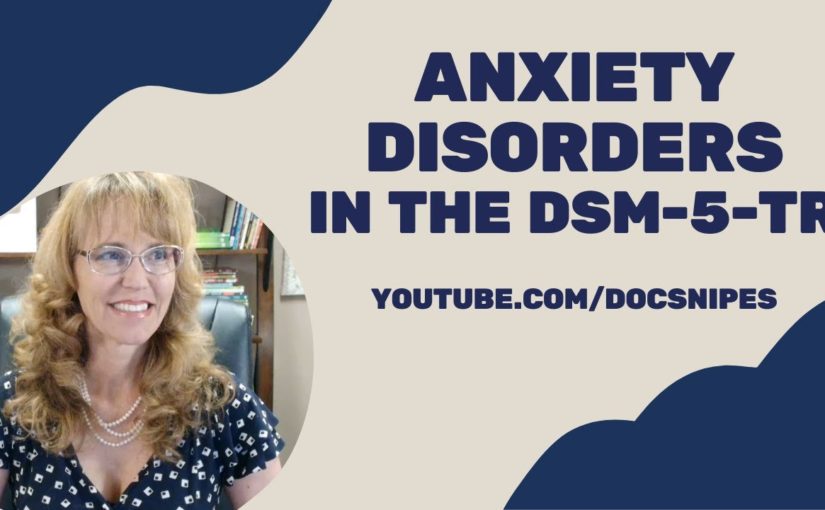
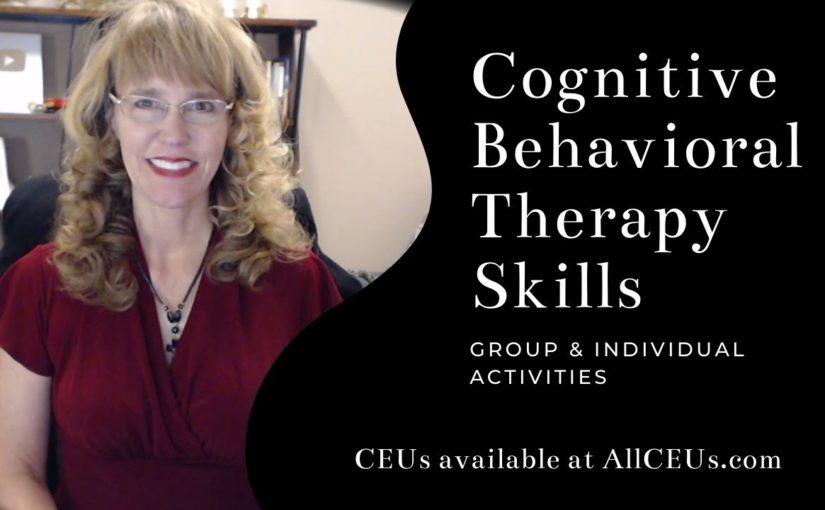
 If it was your best friend’s experience your best friend came to you and said I
just got into such-and-such college would you say awesome or would you say
anybody can get in there how would that go ask them what is scary about
accepting these positive things that you might have had an
accomplishment for some people it means that it might mean other people expect
more of them for other people they just don’t know how to accept the positive
They don’t know how to accept compliments they don’t know how to be
the center of attention and they don’t like it and then we want to look at why
that is sometimes we disqualify the positive because it fails to meet
someone else’s standards so as people might that be true here you know I know
When I was growing up and going through college and going through school and
everything got my doctorate but I will always not being not
a real doctor because a Ph.D. is not an MD and I’m like really
So is it somebody else’s standards or can I feel good about having a Ph.D. egocentrism My perspective is the only
perspective I’ll being egocentric but it doesn’t work
most of the time so encouraging people to take alternate perspectives
Maybe you’re texting with someone and they say something that is not what you
interpret as not the nicest thing and this happens in text messages a lot and
they get upset now an egocentric thinking error would say that purse is
just grumpy today Someone who’s taking other perspectives would stop and go
back and read the text and go I wonder if maybe this could have been taken some
other another you know obvious reaction is not what I intended
So egocentrism if you hold on to that I don’t understand anybody else because
You know I don’t see a problem with anything personalizing and mind-reading This is when you assume that everybody’s
frowning because of something you did your boss walks down the hallway
and looks at you and grimaces and continues to walk on oh I must have done
something wrong No maybe he just got out of his senior management meeting that
was five hours long and he’s got to go to the bathroom you know there could be
a hundred different explanations for why that happened so encourage clients to
ask themselves what some alternate explanations for this event that are
doesn’t involve me you know why this might have happened if they hold
on to that, I must have done something wrong but as soon as their boss calls
them up and goes hey can you come to my office for a second you know where their
thoughts are going to go I’m getting fired I’m going to get laid off I don’t
know what it was that I did wrong but he walked by me two weeks ago in the
hallway and grimaced and I’m just I’m the worst person in the whole world
But where did that come from so encouraging people to not necessarily
assume they know what’s going on in someone else’s mind and not
automatically attributing every person’s negative behavior to something they did
How often and then ask them how often has it been about you
now think about the last 10 times you’ve taken something personally how many of
Those 10 times has it been about something you did versus something with
the other person then the availability heuristic remembering what’s most
prominent in your mind so asking clients what the facts ah the most obvious
One that we talk about is plane crashes You know it is very dangerous to fly on a
plane because you hear about all those plane crashes well yeah you hear about
the airlines crashes but don’t hear about the 20,000 every day that land
safely so you remember it and it seems more dangerous because that’s what is in
your mind that’s what is available to you that’s what you’ve based your
thought processes on because maybe you didn’t know that 20,000 planes or more
fly and land just perfectly every day this can also be true with people
remembering what’s most prominent in your mind sometimes and this can be very
very true in domestically violent relationships if somebody falls in love
with someone and that person is just the greatest person since sliced bread for
the first four months and then the cycle starts and there’s this little tiny
a sliver of the honeymoon period after the battering cycle and the person’s like
That’s the person I fell in love with that’s what I remember and they try to
focus on that that’s most prominent in their mind and they ignore the rest of
the stuff so we need to encourage people to look objectively at the facts magnifying high and
low probability outcomes what are the chances that this is going to happen how
Many clients have worked with have gone to the doctor and gotten into a
physical or get a test run and then the doctor had to call them back and
This could be true for you too and the doctor had to call them back two or
Three days later when the tests came back from the lab and that whole three
days they were just in a panic because they
were afraid they were going to get some terminal diagnosis so thinking about
high and low probability outcomes another instance or example of
magnification is somebody that thinks this is the end of the world whatever it
I think I’ve told you before my little story about um tripping when I
was walking down the hall at work and falling and yeah it was embarrassing my
folders went everywhere and yeah but in that big scheme of things will it matter
That much from now you know are people going to think Oh she is such a clutch she
must be a ditz too no I mean they may have thought that at that time I don’t
know but you know in six months nobody’s going to remember and then ask them in
the past when something like this has happened when you’ve had to get a test
done and you’ve had to wait on results or if you’ve done something that was
embarrassing and you didn’t think you thought everybody was going to remember
it forever how did you tolerate it how did you learn to deal with it building
on those strengths that they already have all-or-nothing thinking errors
These are things like love versus hate I love them or I hate them it’s all or
Nothing she does this all the time or she never does it if I’m going to do it
I’m going to do it perfectly or I’m not going to do it at all thank you all good
intentions or all bad intentions you know sometimes we do things with good
intentions that have some bad repercussions so did we do it with all
Bad intentions are all good intentions and the answer is neither most of the
time life is kind of in that middle-ground gray area encouraging clients to
Look and find examples where something hasn’t been one of the polls when have
they done something that they’re proud of that wasn’t perfect or when again
When has somebody else done something that they were proud of that wasn’t
perfect remembering that with availability
heuristic remembering how often something happens and how long it’s
been since you’ve seen that behavior and remember that sometimes good times are
amazing but how frequent are they compared with the bad times another thinking error is a belief in a
just world or a fallacy of fairness I just asked clients to identify for good
people you know who’ve had bad things happen and in in reality we all have bad
things happen good people do bad people do in between people do attributional
errors and this is a pet of mine you know labeling yourself is not a behavior so
global versus specific and I am stupid versus I’m stupid at math I don’t have
good math skills it’s not about me it’s about the skills I can change skills
stable I am and I always will be versus it’s something I can change it’s
something I can learn internally It’s about me as a person versus it’s about a
skill deficit or something I could learn or change and there’s you know lots of
information on attributions out there on the internet if you need a refresher on
it but we find that a lot of people who have dysphoria have negative global
stable internal attributions so questions for clients remember the
beliefs equal thoughts and facts plus personal interpretation another way of
saying it is reality is 10% perception is 10% reality and 90% interpretation so
what are the facts for and against my belief is the belief based on facts or
Feelings Does the belief focus on one aspect or the whole situation Does the
belief seem to use any thinking errors what are alternate explanations what
Would you tell your child or best friend if they had this belief how would you
want someone to tell what would you want someone to tell you about this belief so
If you’re telling somebody about this what are you hoping they’re going to say
in return and finally, how is this belief moving you toward what and who is
important to you or moving you away from what or who is important to you now they
can do a worksheet and have all of these or you can pick one or two of these
questions that are most salient for your clients but they can have kind of at
their fingertips so as they’re going through the day and something happens
They can ask themselves ok what’s an alternate explanation Or you know
Whatever it is this salient for that client’s irrational thoughts how do these
thoughts impact the client’s emotions health relationships and perceptions of
the world you know this is what we want to ask them How is this thought
impacting you globally how may this thought have been helpful in the past
Where did it come from How does it make sense from when you formed it in the
past when you’re dealing with it ask the person if the thought is bringing you
closer to those that are important Are there any examples of this thought or
belief not being true and how can the statement be made less global less
all-encompassing so it’s about a specific incident a specific situation
less stable which means you can change it and less internal which means it’s
not about who you are as a person but maybe something that you do or a skill
that you have so we’re going to go through some of these thoughts real
Quickly here mistakes are never acceptable and if I make one it means
that I’m incompetent well never is kind of stable and I am incompetent is kind
of global, that’s also that extreme all-or-nothing thinking so you can see
where these cognitive distortions end up leading to unhelpful beliefs
When somebody disagrees with me it’s a personal attack Well there’s
Personalization If I ever heard it before maybe it’s not about you may be
They’re having a bad day and you just happen to be the unlucky target or maybe
they’re disagreeing with you because they have a different point of view and
It’s not a personal attack it’s just their point of view If someone
criticizes or rejects me there must be something wrong with me
personalization all-or-nothing thinking global stable and internal something
wrong with me as a person to feel good about myself others must approve of me
Now this is one we’ve talked about external validation before and we can’t
control other people to feel good about yourself how can you do that
Besides necessarily requiring other people to approve of you to be
content in life I must be liked by all people Wow I’ve never met anybody who’s
liked by all people I’ve never even met anybody who’s been hated by all people
but it’s important to help clients see how this is dramatic to say all
people and for them to be content everybody has to like them
I mean I like to be liked but if everybody doesn’t like me you know
That’s pretty understandable My true value as an individual depends on what
others think of me I would challenge this one this is all you know
Also very personally I would challenge people to look at and say it
so your child’s value as an individual depends on what other people think of
Most people would say no but the perspective thing nothing ever turns
out the way you want it to okay all-or-nothing thinking and probably
availability heuristic if something bad just happened then they may be focusing
on that which causes them to focus on all the other bad things in the past
that have happened not to focus on that is okay you know bad thing
happen but look at all these good things I won’t try anything new unless I will
be good at it this fear of failure fear of rejection
It just really paralyzes a lot of people when they get stuck with that thinking
the area that they have to be perfect I am in total control of anything bad that
happens is my fault well that’s egocentric and personal if
They think they’re in total control that’s their perception of how the world
Do they think if they’ve got everybody on marionette strings anything
bad in the world that happens is their fault how powerful are they
I feel happy about uh if I feel happy about life something will go wrong
It happens sometimes but let’s look at times when you’ve been happy that
something hasn’t gone wrong you know let’s get rid of that all-or-nothing
thinking it’s not my fault my life didn’t go the way I wanted could be true
but it seems like that’s making you unhappy so what do we do about that if
I’m not in an intimate relationship I’m alone
No, again that’s pretty extreme I’m either in an intimate relationship or I
am alone and a loner and you know it’s just me and my 17 cats which follows
with there’s no gray area so encouraging people to look at what these
beliefs are saying important thoughts impact behaviors and emotional and
Physical reactions emotional and physical reactions impact thoughts and
interpretations of events so if you do something and it’s pleasurable
and you have a great physical reaction you know let’s take bungee jumping or
Skydiving if you go out there and it’s scary but you do it and you’re just like
Whoa what a rush Your interpretation of that is probably going to be good which
means you’ll probably do it again if you go out there and it’s just the most
horrible experience you’ve ever had you’re probably not going to do it again
and your interpretation of it is going to be not good which is going to make it
hard to understand why other people would do it irrational
thinking patterns are often caused by cognitive distortions so let’s just look
back at some of those because there are a lot fewer cognitive distortions or
general ways of thinking about the world then there are thinking errors because
There are lots and lots of thinking errors Cognitive distortions are often schemas
which were formed based on faulty inaccurate or immature knowledge or
understanding and by identifying the thoughts of the hecklers you know the
automatic tapes that maintain our unhappiness the person can choose
whether to accept those thoughts or change them.
If it was your best friend’s experience your best friend came to you and said I
just got into such-and-such college would you say awesome or would you say
anybody can get in there how would that go ask them what is scary about
accepting these positive things that you might have had an
accomplishment for some people it means that it might mean other people expect
more of them for other people they just don’t know how to accept the positive
They don’t know how to accept compliments they don’t know how to be
the center of attention and they don’t like it and then we want to look at why
that is sometimes we disqualify the positive because it fails to meet
someone else’s standards so as people might that be true here you know I know
When I was growing up and going through college and going through school and
everything got my doctorate but I will always not being not
a real doctor because a Ph.D. is not an MD and I’m like really
So is it somebody else’s standards or can I feel good about having a Ph.D. egocentrism My perspective is the only
perspective I’ll being egocentric but it doesn’t work
most of the time so encouraging people to take alternate perspectives
Maybe you’re texting with someone and they say something that is not what you
interpret as not the nicest thing and this happens in text messages a lot and
they get upset now an egocentric thinking error would say that purse is
just grumpy today Someone who’s taking other perspectives would stop and go
back and read the text and go I wonder if maybe this could have been taken some
other another you know obvious reaction is not what I intended
So egocentrism if you hold on to that I don’t understand anybody else because
You know I don’t see a problem with anything personalizing and mind-reading This is when you assume that everybody’s
frowning because of something you did your boss walks down the hallway
and looks at you and grimaces and continues to walk on oh I must have done
something wrong No maybe he just got out of his senior management meeting that
was five hours long and he’s got to go to the bathroom you know there could be
a hundred different explanations for why that happened so encourage clients to
ask themselves what some alternate explanations for this event that are
doesn’t involve me you know why this might have happened if they hold
on to that, I must have done something wrong but as soon as their boss calls
them up and goes hey can you come to my office for a second you know where their
thoughts are going to go I’m getting fired I’m going to get laid off I don’t
know what it was that I did wrong but he walked by me two weeks ago in the
hallway and grimaced and I’m just I’m the worst person in the whole world
But where did that come from so encouraging people to not necessarily
assume they know what’s going on in someone else’s mind and not
automatically attributing every person’s negative behavior to something they did
How often and then ask them how often has it been about you
now think about the last 10 times you’ve taken something personally how many of
Those 10 times has it been about something you did versus something with
the other person then the availability heuristic remembering what’s most
prominent in your mind so asking clients what the facts ah the most obvious
One that we talk about is plane crashes You know it is very dangerous to fly on a
plane because you hear about all those plane crashes well yeah you hear about
the airlines crashes but don’t hear about the 20,000 every day that land
safely so you remember it and it seems more dangerous because that’s what is in
your mind that’s what is available to you that’s what you’ve based your
thought processes on because maybe you didn’t know that 20,000 planes or more
fly and land just perfectly every day this can also be true with people
remembering what’s most prominent in your mind sometimes and this can be very
very true in domestically violent relationships if somebody falls in love
with someone and that person is just the greatest person since sliced bread for
the first four months and then the cycle starts and there’s this little tiny
a sliver of the honeymoon period after the battering cycle and the person’s like
That’s the person I fell in love with that’s what I remember and they try to
focus on that that’s most prominent in their mind and they ignore the rest of
the stuff so we need to encourage people to look objectively at the facts magnifying high and
low probability outcomes what are the chances that this is going to happen how
Many clients have worked with have gone to the doctor and gotten into a
physical or get a test run and then the doctor had to call them back and
This could be true for you too and the doctor had to call them back two or
Three days later when the tests came back from the lab and that whole three
days they were just in a panic because they
were afraid they were going to get some terminal diagnosis so thinking about
high and low probability outcomes another instance or example of
magnification is somebody that thinks this is the end of the world whatever it
I think I’ve told you before my little story about um tripping when I
was walking down the hall at work and falling and yeah it was embarrassing my
folders went everywhere and yeah but in that big scheme of things will it matter
That much from now you know are people going to think Oh she is such a clutch she
must be a ditz too no I mean they may have thought that at that time I don’t
know but you know in six months nobody’s going to remember and then ask them in
the past when something like this has happened when you’ve had to get a test
done and you’ve had to wait on results or if you’ve done something that was
embarrassing and you didn’t think you thought everybody was going to remember
it forever how did you tolerate it how did you learn to deal with it building
on those strengths that they already have all-or-nothing thinking errors
These are things like love versus hate I love them or I hate them it’s all or
Nothing she does this all the time or she never does it if I’m going to do it
I’m going to do it perfectly or I’m not going to do it at all thank you all good
intentions or all bad intentions you know sometimes we do things with good
intentions that have some bad repercussions so did we do it with all
Bad intentions are all good intentions and the answer is neither most of the
time life is kind of in that middle-ground gray area encouraging clients to
Look and find examples where something hasn’t been one of the polls when have
they done something that they’re proud of that wasn’t perfect or when again
When has somebody else done something that they were proud of that wasn’t
perfect remembering that with availability
heuristic remembering how often something happens and how long it’s
been since you’ve seen that behavior and remember that sometimes good times are
amazing but how frequent are they compared with the bad times another thinking error is a belief in a
just world or a fallacy of fairness I just asked clients to identify for good
people you know who’ve had bad things happen and in in reality we all have bad
things happen good people do bad people do in between people do attributional
errors and this is a pet of mine you know labeling yourself is not a behavior so
global versus specific and I am stupid versus I’m stupid at math I don’t have
good math skills it’s not about me it’s about the skills I can change skills
stable I am and I always will be versus it’s something I can change it’s
something I can learn internally It’s about me as a person versus it’s about a
skill deficit or something I could learn or change and there’s you know lots of
information on attributions out there on the internet if you need a refresher on
it but we find that a lot of people who have dysphoria have negative global
stable internal attributions so questions for clients remember the
beliefs equal thoughts and facts plus personal interpretation another way of
saying it is reality is 10% perception is 10% reality and 90% interpretation so
what are the facts for and against my belief is the belief based on facts or
Feelings Does the belief focus on one aspect or the whole situation Does the
belief seem to use any thinking errors what are alternate explanations what
Would you tell your child or best friend if they had this belief how would you
want someone to tell what would you want someone to tell you about this belief so
If you’re telling somebody about this what are you hoping they’re going to say
in return and finally, how is this belief moving you toward what and who is
important to you or moving you away from what or who is important to you now they
can do a worksheet and have all of these or you can pick one or two of these
questions that are most salient for your clients but they can have kind of at
their fingertips so as they’re going through the day and something happens
They can ask themselves ok what’s an alternate explanation Or you know
Whatever it is this salient for that client’s irrational thoughts how do these
thoughts impact the client’s emotions health relationships and perceptions of
the world you know this is what we want to ask them How is this thought
impacting you globally how may this thought have been helpful in the past
Where did it come from How does it make sense from when you formed it in the
past when you’re dealing with it ask the person if the thought is bringing you
closer to those that are important Are there any examples of this thought or
belief not being true and how can the statement be made less global less
all-encompassing so it’s about a specific incident a specific situation
less stable which means you can change it and less internal which means it’s
not about who you are as a person but maybe something that you do or a skill
that you have so we’re going to go through some of these thoughts real
Quickly here mistakes are never acceptable and if I make one it means
that I’m incompetent well never is kind of stable and I am incompetent is kind
of global, that’s also that extreme all-or-nothing thinking so you can see
where these cognitive distortions end up leading to unhelpful beliefs
When somebody disagrees with me it’s a personal attack Well there’s
Personalization If I ever heard it before maybe it’s not about you may be
They’re having a bad day and you just happen to be the unlucky target or maybe
they’re disagreeing with you because they have a different point of view and
It’s not a personal attack it’s just their point of view If someone
criticizes or rejects me there must be something wrong with me
personalization all-or-nothing thinking global stable and internal something
wrong with me as a person to feel good about myself others must approve of me
Now this is one we’ve talked about external validation before and we can’t
control other people to feel good about yourself how can you do that
Besides necessarily requiring other people to approve of you to be
content in life I must be liked by all people Wow I’ve never met anybody who’s
liked by all people I’ve never even met anybody who’s been hated by all people
but it’s important to help clients see how this is dramatic to say all
people and for them to be content everybody has to like them
I mean I like to be liked but if everybody doesn’t like me you know
That’s pretty understandable My true value as an individual depends on what
others think of me I would challenge this one this is all you know
Also very personally I would challenge people to look at and say it
so your child’s value as an individual depends on what other people think of
Most people would say no but the perspective thing nothing ever turns
out the way you want it to okay all-or-nothing thinking and probably
availability heuristic if something bad just happened then they may be focusing
on that which causes them to focus on all the other bad things in the past
that have happened not to focus on that is okay you know bad thing
happen but look at all these good things I won’t try anything new unless I will
be good at it this fear of failure fear of rejection
It just really paralyzes a lot of people when they get stuck with that thinking
the area that they have to be perfect I am in total control of anything bad that
happens is my fault well that’s egocentric and personal if
They think they’re in total control that’s their perception of how the world
Do they think if they’ve got everybody on marionette strings anything
bad in the world that happens is their fault how powerful are they
I feel happy about uh if I feel happy about life something will go wrong
It happens sometimes but let’s look at times when you’ve been happy that
something hasn’t gone wrong you know let’s get rid of that all-or-nothing
thinking it’s not my fault my life didn’t go the way I wanted could be true
but it seems like that’s making you unhappy so what do we do about that if
I’m not in an intimate relationship I’m alone
No, again that’s pretty extreme I’m either in an intimate relationship or I
am alone and a loner and you know it’s just me and my 17 cats which follows
with there’s no gray area so encouraging people to look at what these
beliefs are saying important thoughts impact behaviors and emotional and
Physical reactions emotional and physical reactions impact thoughts and
interpretations of events so if you do something and it’s pleasurable
and you have a great physical reaction you know let’s take bungee jumping or
Skydiving if you go out there and it’s scary but you do it and you’re just like
Whoa what a rush Your interpretation of that is probably going to be good which
means you’ll probably do it again if you go out there and it’s just the most
horrible experience you’ve ever had you’re probably not going to do it again
and your interpretation of it is going to be not good which is going to make it
hard to understand why other people would do it irrational
thinking patterns are often caused by cognitive distortions so let’s just look
back at some of those because there are a lot fewer cognitive distortions or
general ways of thinking about the world then there are thinking errors because
There are lots and lots of thinking errors Cognitive distortions are often schemas
which were formed based on faulty inaccurate or immature knowledge or
understanding and by identifying the thoughts of the hecklers you know the
automatic tapes that maintain our unhappiness the person can choose
whether to accept those thoughts or change them.

 The Market WeekSign Up For The Free Newsletter No nonsense, no spam, unsubscribe anytime You can unsubscribe at any time. Read our privacy policy. Financial disclaimer: The Market Week is a general interest newsletter that is not liable for the suitability or future investment performance of any securities or strategies discussed. Readers are advised that the material contained herein should be used solely for informational purposes. As a financial newsletter publisher of general and regular circulation, we cannot tender individual investment advice. Read our full disclaimer.
The Market WeekSign Up For The Free Newsletter No nonsense, no spam, unsubscribe anytime You can unsubscribe at any time. Read our privacy policy. Financial disclaimer: The Market Week is a general interest newsletter that is not liable for the suitability or future investment performance of any securities or strategies discussed. Readers are advised that the material contained herein should be used solely for informational purposes. As a financial newsletter publisher of general and regular circulation, we cannot tender individual investment advice. Read our full disclaimer. 
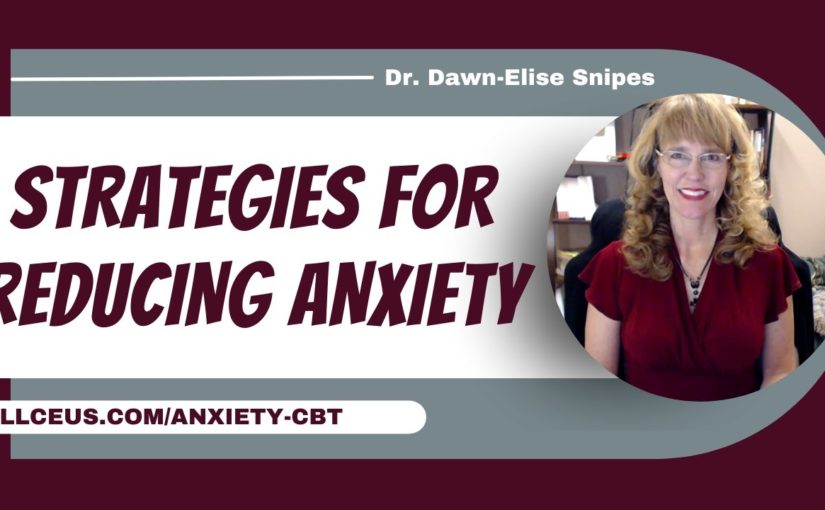
 Snipes by subscribing
at all CEUs comm slash counselor toolbox, this episode has been brought to you in part by all
CEUs calmly provide 24/7 multimedia continuing education and pre-certification training to
counselors therapists and nurses since 2006 have used coupon code consular toolbox to get
a 20% discount on your order this month.
Snipes by subscribing
at all CEUs comm slash counselor toolbox, this episode has been brought to you in part by all
CEUs calmly provide 24/7 multimedia continuing education and pre-certification training to
counselors therapists and nurses since 2006 have used coupon code consular toolbox to get
a 20% discount on your order this month.





















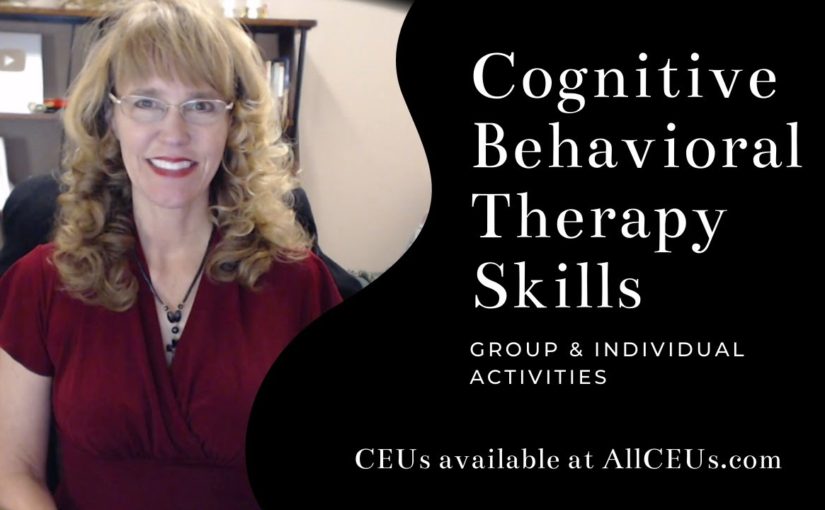



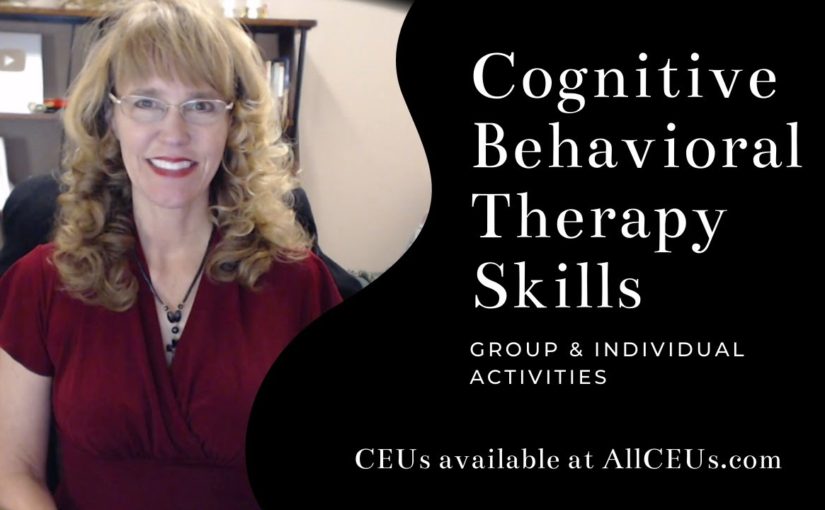

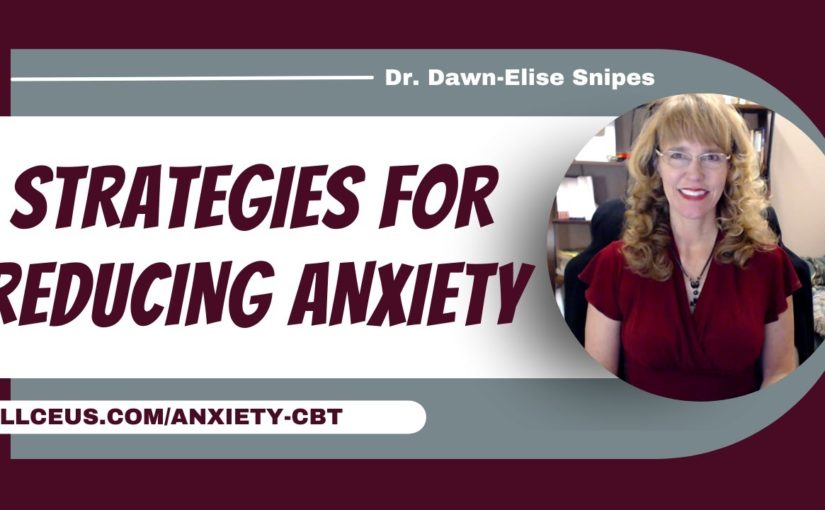
 Snipes by subscribing
at all CEUs comm slash counselor toolbox, this episode has been brought to you in part by all
CEUs calmly provide 24/7 multimedia continuing education and pre-certification training to
counselors therapists and nurses since 2006 have used coupon code consular toolbox to get
a 20% discount on your order this month.
Snipes by subscribing
at all CEUs comm slash counselor toolbox, this episode has been brought to you in part by all
CEUs calmly provide 24/7 multimedia continuing education and pre-certification training to
counselors therapists and nurses since 2006 have used coupon code consular toolbox to get
a 20% discount on your order this month.
 Etc sometimes you need to
delay joint sessions until the parent or caregiver can offer the child support and sometimes that
means not even starting treatment really until the parent and caregiver parent or caregiver
can be on board now you can get started with psychoeducation emotions identification feelings
identification and stress management and coping skills you know there were not really
poking a bunch of bears so you can probably safely get started on that if it’s sometimes it’s
court-ordered and they have to start treatment by April 1st or something so there are things you can
do but you may need to delay the actual beginning of the trauma narrative until the parent is
able to be available to educate everybody on how therapy works and instill in everyone not just
the parent optima optimist that well optimism about the child’s potential for recovery you
know sometimes they’ve been dealing with this child’s acting out behaviors for so long they’re
just like you know we’ve already been to three other therapists I don’t know what’s going to
fix it or I’ve done everything I know how to do good luck so we can talk about you know a
different approach or we can talk about what they’ve done that’s worked for a short period
of time and build on those strengths to instill optimism and hope and empowerment so
initially, when we talk about psycho-education it’s important to provide accurate information
about the trauma when children are traumatized they can be confused and not completely understand
what happened they may blame themselves and they may hold on to myths because they’ve been misled
and/or deliberately given incorrect information so one of the best ways we can help is to correct
that information provides information about how often this happens and whether you know it’s okay
to do this that or the other psychoeducation clarifies inappropriate information children may
have obtained directly from the perpetrator or on their own so the perpetrator may have told them
that this is how I express love or this is how you need to be disciplined because you don’t learn
this is how I was disciplined whatever it is or they could have gotten it on their own they could
have gotten it from school from the internet or just come up with it in their little heads trying
to make sense of what happened psychoeducation also helps them identify safety issues the
difference between safe situations and dangerous situations and as we get through this I really
want you to get away from the notion that TF CBT and childhood trauma are only physical and sexual
abuse there are so many other traumas as evidenced by the adverse childhood experiences survey that
I want you to wrap your head around that and there are things they didn’t cover in the aces such as
bullying and natural disasters so we want to help children whatever the trauma is the trauma made
they feel unsafe so we want to identify safety issues if the trauma was a hurricane then we want
to talk about what hurricanes are how often they hit what to safety plan etc so every time a
the thunderstorm comes they don’t freak out and we want to use psychoeducation to provide another
way to target faulty or maladaptive beliefs by helping to normalize thoughts and feelings about
the traumatic experience you know it makes sense that that was scary and makes sense that
you’re angry it makes sense that you feel this way and we can talk about why that makes
sense and why it makes you feel that way through cycle education you’re getting the child to start
talking about the specific trauma that he or she experienced in a less anxiety-provoking way by
talking in Jen wrong about the type of trauma so you’re talking about natural disasters you’re
talking about plane crashes you’re talking about domestic violence so they start learning about
it and then eventually you’re going to move down to their experience with it so like I said there
are a ton of different traumas and the ACE study even acknowledges that these are just the ten most
common ones that they heard however there are many many many different traumas and types of trauma
some of the biggest ones are physical and sexual abuse physical neglect emotional abuse
and neglect and the Aces identified mother treated violently I would say anyone in the household
treated violently it’s not just the mother’s substance misuse within the household and that
can be by the parents or by siblings household mental illness parental separation or divorce and
an incarcerated household member so those were aces but then like I said there’s also bullying
the death of a parent or sibling is extremely traumatic hurricane tornado natural disaster and
then I put the fire out separately because sometimes fire can be man-made sometimes it can be a wiring
problem but sometimes it can be Jr was playing with matches now even if jr. Accidentally started
the fire does that make it any less traumatic no it probably makes it more traumatic because then
there’s a whole sense of guilt and responsibility but it’s still a trauma that has to be dealt
with so I put a link to the adverse childhood experiences website if you want to go look more
about that but we’re going to move on psycho-education involves specific information about
the traumatic events the child has experienced not the child’s event we’re not going to go
into police records or something, we’re just going to talk about specific information about
domestic violence or whatever body awareness and sex education in cases of physical or sexual
maltreatment and there are caveats for getting parental consent and permission and all that other
stuff and Risk Reduction skills to decrease the risk of future traumatization now going back to
those other things it’s not just about physical or sexual abuse so we want to look at what was the
the risk created by you know how can you reduce your risk of being bullied how can you reduce your
risk of being traumatized in a tornado you know you can’t stop the tornado from coming
and they’re everywhere so what do you do and talk about a safety plan the same thing with fire
information needs to be tailored to fit a child’s particularly particular experiences and level
of knowledge obviously, you’re going to provide different information to a seven-year-old than
you are to a 17-year-old provide caregivers with handout materials to reinforce the information
discussed in session so this may help educate the parents about some of it but it lets them
know what you talked about and it gets us all on the literal same page you’re providing them a
handout of everything you went over with Junior and we want to encourage caregivers to discuss
this information at home reinforces accurate information about how safe or unsafe they
are and obviously, we’re going towards safe and reinforced accurate information and develop
a safety plan so they feel confident that at home they’re going to be taken care of when you
start psychoeducation you do want to get a sense of what the child already knows and you can use
a question-and-answer game format in which the child gets points for answering questions which I
love this suggestion so you can ask them if you know what is a hurricane or is a tornado and see
if they know and see if they know how much time and much-advanced warning we have for a tornado
versus a hurricane or you know whatever situation you’re talking about you see I did a lot of posts
Hurricane Katrina counseling in northern Florida so that’s one of those things that comes up for
I am talking with children about how likely is it that a category 5 hurricane is going to hit
again but encouraging them to give your aunt’s give answers and if they give the wrong answer you
know it’s great to try now you know try to coach them into a correct answer or provide them the correct
one but give them credit for at least making an effort sample questions might include what is
you know and put in the type of trauma what is bullying how often do you think bullying happens
and why does bullying happen you know those are some questions you can ask to just open a dialogue
about bullying, if this child has been a victim of bullying and is and is traumatized so cultural
considerations meet the child and family where they are by presenting information in a way which
they can relate it to their belief system and you may need to consult with their spiritual
guidance guides leaders whether it be a pastor or you know whatever to get some guidance
on how to handle certain aspects of whether it was the will of God and in the case of sexual abuse
how to handle the concept of virginity and how to handle the concept of bad things happening to bad
people and whatever else they think is coming from or their parents are instilling in them in a
belief system we want to make sure that we’re not necessarily contradicting it and going oh mom dad
and the church is wrong but we also want to help them try to integrate this in a way that can help
they have strong self-esteem so reaching out to those spiritual leaders and the family asking what
their belief system about certain things can be very helpful assess the general beliefs about
the trauma if something happened or when something happens ask the parent or the family that’s there
not necessarily the child but you want to get a sense of what the family stance is on why this
happened what it means how it’s going to impact life hence foreign henceforth and forever more
focus on the events they perceive as traumatic to the family but most especially the child if the
child’s going back to the Aces you know maybe the parents got divorced but the child doesn’t
see that as traumatic because there was domestic violence ahead of time the domestic violence was
traumatic the divorce was a relief so wherever the child is with each trauma we want to
be respectful of what they perceive is traumatic and tailor the information so the family can be
more receptive to it as supportive as possible and sometimes you need to make sure that the language
you know make sure the language is not jargony about general views of mental health and mental health
treatment should also be assessed and addressed in the psychoeducation piece not only with the child
but also with the family, if they are suspicious of it don’t understand it think that you’re just
going to magically fix Junior we want to demystify the process and talk about what is the purpose of
the assessment what is the purpose of each one of these activities and why am I doing this or why
are we doing this as a team and how can it help and then we also want to provide information to
D stigmatize and normalize mental health issues and seeking treatment some cultures are still
resistant to seeking treatment and I use the term cultures broadly because there’s
a stigma associated with it so normalizing for them how many people go to treatment how common
PTSD is or whatever the situation you’re dealing with it doesn’t mean they have to like it but at
At least it will give them a little bit of a nugget to understand that they’re not the only ones if
they are from a cultural group a minority cultural group of some sort you might want to provide
information about how common this particular issue is in their group I’ve done a lot of work
with law enforcement and emergency responders and they’re kind of their little group so
we talk about how common depression is among law enforcement and emergent emergency responders
specifically, because they face so much so many different stressors than you know Joe Schmo over
here so it D stigmatizes and normalizes a little bit now they still may not talk about it and
go well hey you know 37% of us have clinical depression no that’s probably not going to happen
but at least in the back of their mind, they can go you know what I’m looking around this room and
I can bet that at least one other person’s on antidepressants or something and feel a little
less unique and isolated in parent sessions you want to provide a rationale and overview of the
treatment model educates parents about the trauma and talks about the child’s trauma-related symptoms
so we’re going to go over what is hyper-vigilance what is the function it why people become
hypervigilant after trauma and what might it look like in a child because it presents very
differently for different children so we might want to give some ideas and say does this sound
like Johnny or does this sound like Johnny and help them understand why these behaviors may
be coming out we want to talk about how early treatment helps prevent long-term problems okay
maybe the trauma happened three years ago but still, it’s better than waiting ten more years and
you know Johnny’s still not having any Ellucian will want to talk about the importance of talking
directly about the trauma to help the children cope with their experiences and not hedging and
this will be on a case-by-case basis but the manual walks you through handling this discussion with
the parents about exactly how much detail do I go into if Johnny brings it up at home reassure
parents that children will first be taught skills to help them cope with their discomfort
and that talking about the trauma will be done slowly with a great deal of support so we’re not
just going to plop them down and go okay and tell me about the day that all this happened which
is what the child has experienced already if it was reported to law enforcement and/or the child
welfare they’ve probably had somebody sit down and say get right to the nitty-gritty at least
once or twice and it’s completely dehumanizing so we want to reassure parents that we’re not
going to do that to the child again will help the caregiver understand their role in the child’s
treatment since this modified since this model emphasizes working together as a team so I’m not
just going to be educating you it’s not going to be a parallel thing where I go in and I work with
Johnny and then I tell you what I did and then I work with Johnny I’m going to work with Johnny
and then we’re going to discuss what Johnny and I did in session and I’m going to get input from
you and we’re going to talk about how you feel about it and then I’m going to provide you with tools
so you can help Johnny outside of the session because you’re going to be with them for six-and-a-half
other days that I’m not and this can’t work if it’s just one hour once a week and we want to
elicit parent input questions and suggestions as much as possible because they’ve been living with
their kid for you know however many years so they probably have an idea about what works and what
doesn’t so we’ll start with both parents and children in their respective sessions helping
them understand what control breathing is and how it helps slow the heart rate and trigger the
wrist and digest sort of reaction in your body when your breathing slows your heart naturally
slows because the stress reaction tells your brain you’ve got to breathe fast and the heart
rates got to go fast well when you override that then you’re kind of overriding the whole system
and we’ll also talk about thought stopping and this is especially helpful if the trauma is recent
or and/or ever-present in the mind of the youth so they can say I am NOT going to talk about that right
now I’m not going to think about that right talk about distraction techniques go back to
your DBT stuff talks about improving the moment and accepts to help the child develop skills to
handle and work through when those thoughts pop up replace unthawed unwanted thoughts with
a pleasant one so talk about it in session when thoughts like that come up what would you
prefer to think about and then really get into the Nitty Gritty the five senses what do you see
smell hear taste you know help me get into that situation or that thought this teaches that
thoughts even unexpected and intrusive ones can be controlled so that gives them hope and again we’re
not exacerbating the thoughts right now we’re not bringing up their particular trauma and
having them get into detail we are just helping them deal with what’s happening normally on a
day-to-day basis so they feel like they have more control for the older kids you can have them
people log about when this technique is used what they were thinking about and how effective the
thought stopping was and then review it and help them tune it up if it’s not really effective and
give them praise for when they use it effectively relaxation training persons of Asian or Hispanic
origin tend to express stress in more somatic or physical terms so just be aware of that but that
doesn’t mean that Caucasians don’t relaxation training is good for anyone and the medical
school of South Carolina training recommended that relaxation is stress-free and
workbook by Davis Schulman and McKay so and it is still in publication when deciding how to
present relaxation techniques are creative have the child help you to integrate the elements
into the technique that makes it more relevant to them so, what are you thinking about when you
relax you know I know I like to go to the woods but maybe this kid likes to think about a video
game or play with their dog whatever it is but helps them make it relevant to them and then have
they identify other things they do to relax like drawing listening to music walking and making a
list of those things so they can refer to it when you’re teaching relaxation training especially if
you’re doing something like progressive muscular relaxation be sensitive to the child’s wishes if
they don’t wish to close their eyes or lie down which could trigger memories of the trauma we’re
not going there yet so if they feel vulnerable lying down or taking orders like that because
you can imagine how being told to lie down and close their eyes might be a trigger for certain
abuse survivors you know be cognizant of that and say you know get into a comfortable position
or how where would you like to sit while we talk about this like I said parents can often
benefit from the relaxation training as well so because they’re dealing with their issues
about the trauma but they’re also dealing with trying to figure out how to help Johnny and any
of them deal with any of Johnny’s misbehaviors or problematic behaviors then they move on to
feelings identification so it helps the therapist judge the child’s ability to articulate feelings
if you can tell me what makes you happy that’s great but if you can’t then you know we need to
work on figuring out what makes you happy you also want to help the child rate the intensity
of the emotion don’t let them stick with happy mad sad glad and afraid you know let’s talk about
different emotions and use the emotion chart with little faces on it or you can use the emotion
thermometer so is it a hot emotion or is it a cool emotion and helps the child
learn how to express feelings appropriately in different situations I mean sometimes they’re
going to be angry but it might not be appropriate to you know get up and stomp out of the room or
whatever however they communicate it so help them figure out how to articulate that so they can be
heard and supported some children have difficulty discussing or identifying their feelings so
you might try stepping back and discussing the feelings of other children or characters from
books or stories so you know think about Puff the Magic Dragon if they’ve read that you know
that dates me a little bit there but you know how did the little boy feel and talking about things
different characters and different stories where there are elements of anger and shame and loss and
all of that stuff helps children identify how they experience emotions if they seem detached
from the experience because sometimes they just they’ve shut it off it was just too overwhelming
so we want to talk about you know when you’re happy what does that feel like or when you’re
angry what happens what does your body feel like when you’re angry and they might be able
to tell you they hear their heartbeat in their ears or everything gets all fuzzy or whatever
but help them start tuning in to how they react and connecting that with an emotional word and then
after all, that’s done they can identify feelings they can identify feeling intensity now we want to
differentiate between thoughts and feelings many children describe thoughts when they’ve been
asked about a feeling so if you ask them how they feel they may say I want to run away so
you want to say okay well I hear that you want to run away so I’m wondering if you are bored and you
you’re bored and want to get away from it or if you’re scared can you tell me a little bit more
about what it means to you to want to run away during feelings identification the parent
sessions normalize what is going on with their child and help the parent understand that some
children may be seemingly in constant distress or detached from the trauma and that’s okay
we all react differently to traumas so again we’re going to share with the parents what we’re
Do let them know any specific difficulties if any juniors have encouraged the parent to praise
the child for appropriate management of difficult motions and I put in parenthesis successive
approximations because they’re not going to get it a hundred percent right every time so if they
try to effectively manage their emotions even a little bit let’s give them praise for that and
then help them figure out how to do it a little bit better the next time so instead of having a
complete meltdown maybe they got up and stomped out of the room well that’s an improvement so
then we want to talk about how to shape that behavior so it’s a more appropriate communication
if parents have difficulty identifying their own emotions provide them with examples so
continually ask them questions about how you feel when it’s a rainy day outside and how to do you
feel when somebody’s supposed to call you and they don’t how do you feel when and have about 15 or 20
examples and you can have them on a piece of paper and even give it to the parent to take home for
their homework if parents are overcome with their own emotions about the trauma validate
their feelings and explain how children need to see that their parents can handle talking
about the trauma so there the children need to see the strength and the parents which is what you’re
going to work on in parent sessions to make sure that the parents have the resolve and the skills
handle talking about this topic with junior TFC BT can be an effective intervention
for children or adolescents whose primary presenting issue is trauma-related emotional or
behavioral dysregulation TF CBT is not appropriate for clients who are actively suicidal and severely
depressed or currently abusing substances we want to make sure they’re clean
and sober as much as possible TF CBT starts with psychoeducation and then teaches stress
management and coping skills to aid in the management of distressing feelings psycho IDI
helps to clarify the inappropriate information children may have and start getting them a little
a bit more comfortable talking about the topic in general before we start going deeper and
feelings identification helps participants start effectively labeling and communicating their
feelings so they can receive the support and nurturance they need from their caregivers
and their support system if you enjoy this podcast please like and subscribe either in your
podcast player or on YouTube you can attend and participate in our live webinars with dr. Snipes
by subscribing to all CEUs comm slash counselor toolbox this episode has been brought to you in
part by all CEUs calm providing 24/7 multimedia continuing education and pre-certification
training to counselors therapists and nurses since 2006 use coupon code consular toolbox to
get a 20% discount on your order this month.
Etc sometimes you need to
delay joint sessions until the parent or caregiver can offer the child support and sometimes that
means not even starting treatment really until the parent and caregiver parent or caregiver
can be on board now you can get started with psychoeducation emotions identification feelings
identification and stress management and coping skills you know there were not really
poking a bunch of bears so you can probably safely get started on that if it’s sometimes it’s
court-ordered and they have to start treatment by April 1st or something so there are things you can
do but you may need to delay the actual beginning of the trauma narrative until the parent is
able to be available to educate everybody on how therapy works and instill in everyone not just
the parent optima optimist that well optimism about the child’s potential for recovery you
know sometimes they’ve been dealing with this child’s acting out behaviors for so long they’re
just like you know we’ve already been to three other therapists I don’t know what’s going to
fix it or I’ve done everything I know how to do good luck so we can talk about you know a
different approach or we can talk about what they’ve done that’s worked for a short period
of time and build on those strengths to instill optimism and hope and empowerment so
initially, when we talk about psycho-education it’s important to provide accurate information
about the trauma when children are traumatized they can be confused and not completely understand
what happened they may blame themselves and they may hold on to myths because they’ve been misled
and/or deliberately given incorrect information so one of the best ways we can help is to correct
that information provides information about how often this happens and whether you know it’s okay
to do this that or the other psychoeducation clarifies inappropriate information children may
have obtained directly from the perpetrator or on their own so the perpetrator may have told them
that this is how I express love or this is how you need to be disciplined because you don’t learn
this is how I was disciplined whatever it is or they could have gotten it on their own they could
have gotten it from school from the internet or just come up with it in their little heads trying
to make sense of what happened psychoeducation also helps them identify safety issues the
difference between safe situations and dangerous situations and as we get through this I really
want you to get away from the notion that TF CBT and childhood trauma are only physical and sexual
abuse there are so many other traumas as evidenced by the adverse childhood experiences survey that
I want you to wrap your head around that and there are things they didn’t cover in the aces such as
bullying and natural disasters so we want to help children whatever the trauma is the trauma made
they feel unsafe so we want to identify safety issues if the trauma was a hurricane then we want
to talk about what hurricanes are how often they hit what to safety plan etc so every time a
the thunderstorm comes they don’t freak out and we want to use psychoeducation to provide another
way to target faulty or maladaptive beliefs by helping to normalize thoughts and feelings about
the traumatic experience you know it makes sense that that was scary and makes sense that
you’re angry it makes sense that you feel this way and we can talk about why that makes
sense and why it makes you feel that way through cycle education you’re getting the child to start
talking about the specific trauma that he or she experienced in a less anxiety-provoking way by
talking in Jen wrong about the type of trauma so you’re talking about natural disasters you’re
talking about plane crashes you’re talking about domestic violence so they start learning about
it and then eventually you’re going to move down to their experience with it so like I said there
are a ton of different traumas and the ACE study even acknowledges that these are just the ten most
common ones that they heard however there are many many many different traumas and types of trauma
some of the biggest ones are physical and sexual abuse physical neglect emotional abuse
and neglect and the Aces identified mother treated violently I would say anyone in the household
treated violently it’s not just the mother’s substance misuse within the household and that
can be by the parents or by siblings household mental illness parental separation or divorce and
an incarcerated household member so those were aces but then like I said there’s also bullying
the death of a parent or sibling is extremely traumatic hurricane tornado natural disaster and
then I put the fire out separately because sometimes fire can be man-made sometimes it can be a wiring
problem but sometimes it can be Jr was playing with matches now even if jr. Accidentally started
the fire does that make it any less traumatic no it probably makes it more traumatic because then
there’s a whole sense of guilt and responsibility but it’s still a trauma that has to be dealt
with so I put a link to the adverse childhood experiences website if you want to go look more
about that but we’re going to move on psycho-education involves specific information about
the traumatic events the child has experienced not the child’s event we’re not going to go
into police records or something, we’re just going to talk about specific information about
domestic violence or whatever body awareness and sex education in cases of physical or sexual
maltreatment and there are caveats for getting parental consent and permission and all that other
stuff and Risk Reduction skills to decrease the risk of future traumatization now going back to
those other things it’s not just about physical or sexual abuse so we want to look at what was the
the risk created by you know how can you reduce your risk of being bullied how can you reduce your
risk of being traumatized in a tornado you know you can’t stop the tornado from coming
and they’re everywhere so what do you do and talk about a safety plan the same thing with fire
information needs to be tailored to fit a child’s particularly particular experiences and level
of knowledge obviously, you’re going to provide different information to a seven-year-old than
you are to a 17-year-old provide caregivers with handout materials to reinforce the information
discussed in session so this may help educate the parents about some of it but it lets them
know what you talked about and it gets us all on the literal same page you’re providing them a
handout of everything you went over with Junior and we want to encourage caregivers to discuss
this information at home reinforces accurate information about how safe or unsafe they
are and obviously, we’re going towards safe and reinforced accurate information and develop
a safety plan so they feel confident that at home they’re going to be taken care of when you
start psychoeducation you do want to get a sense of what the child already knows and you can use
a question-and-answer game format in which the child gets points for answering questions which I
love this suggestion so you can ask them if you know what is a hurricane or is a tornado and see
if they know and see if they know how much time and much-advanced warning we have for a tornado
versus a hurricane or you know whatever situation you’re talking about you see I did a lot of posts
Hurricane Katrina counseling in northern Florida so that’s one of those things that comes up for
I am talking with children about how likely is it that a category 5 hurricane is going to hit
again but encouraging them to give your aunt’s give answers and if they give the wrong answer you
know it’s great to try now you know try to coach them into a correct answer or provide them the correct
one but give them credit for at least making an effort sample questions might include what is
you know and put in the type of trauma what is bullying how often do you think bullying happens
and why does bullying happen you know those are some questions you can ask to just open a dialogue
about bullying, if this child has been a victim of bullying and is and is traumatized so cultural
considerations meet the child and family where they are by presenting information in a way which
they can relate it to their belief system and you may need to consult with their spiritual
guidance guides leaders whether it be a pastor or you know whatever to get some guidance
on how to handle certain aspects of whether it was the will of God and in the case of sexual abuse
how to handle the concept of virginity and how to handle the concept of bad things happening to bad
people and whatever else they think is coming from or their parents are instilling in them in a
belief system we want to make sure that we’re not necessarily contradicting it and going oh mom dad
and the church is wrong but we also want to help them try to integrate this in a way that can help
they have strong self-esteem so reaching out to those spiritual leaders and the family asking what
their belief system about certain things can be very helpful assess the general beliefs about
the trauma if something happened or when something happens ask the parent or the family that’s there
not necessarily the child but you want to get a sense of what the family stance is on why this
happened what it means how it’s going to impact life hence foreign henceforth and forever more
focus on the events they perceive as traumatic to the family but most especially the child if the
child’s going back to the Aces you know maybe the parents got divorced but the child doesn’t
see that as traumatic because there was domestic violence ahead of time the domestic violence was
traumatic the divorce was a relief so wherever the child is with each trauma we want to
be respectful of what they perceive is traumatic and tailor the information so the family can be
more receptive to it as supportive as possible and sometimes you need to make sure that the language
you know make sure the language is not jargony about general views of mental health and mental health
treatment should also be assessed and addressed in the psychoeducation piece not only with the child
but also with the family, if they are suspicious of it don’t understand it think that you’re just
going to magically fix Junior we want to demystify the process and talk about what is the purpose of
the assessment what is the purpose of each one of these activities and why am I doing this or why
are we doing this as a team and how can it help and then we also want to provide information to
D stigmatize and normalize mental health issues and seeking treatment some cultures are still
resistant to seeking treatment and I use the term cultures broadly because there’s
a stigma associated with it so normalizing for them how many people go to treatment how common
PTSD is or whatever the situation you’re dealing with it doesn’t mean they have to like it but at
At least it will give them a little bit of a nugget to understand that they’re not the only ones if
they are from a cultural group a minority cultural group of some sort you might want to provide
information about how common this particular issue is in their group I’ve done a lot of work
with law enforcement and emergency responders and they’re kind of their little group so
we talk about how common depression is among law enforcement and emergent emergency responders
specifically, because they face so much so many different stressors than you know Joe Schmo over
here so it D stigmatizes and normalizes a little bit now they still may not talk about it and
go well hey you know 37% of us have clinical depression no that’s probably not going to happen
but at least in the back of their mind, they can go you know what I’m looking around this room and
I can bet that at least one other person’s on antidepressants or something and feel a little
less unique and isolated in parent sessions you want to provide a rationale and overview of the
treatment model educates parents about the trauma and talks about the child’s trauma-related symptoms
so we’re going to go over what is hyper-vigilance what is the function it why people become
hypervigilant after trauma and what might it look like in a child because it presents very
differently for different children so we might want to give some ideas and say does this sound
like Johnny or does this sound like Johnny and help them understand why these behaviors may
be coming out we want to talk about how early treatment helps prevent long-term problems okay
maybe the trauma happened three years ago but still, it’s better than waiting ten more years and
you know Johnny’s still not having any Ellucian will want to talk about the importance of talking
directly about the trauma to help the children cope with their experiences and not hedging and
this will be on a case-by-case basis but the manual walks you through handling this discussion with
the parents about exactly how much detail do I go into if Johnny brings it up at home reassure
parents that children will first be taught skills to help them cope with their discomfort
and that talking about the trauma will be done slowly with a great deal of support so we’re not
just going to plop them down and go okay and tell me about the day that all this happened which
is what the child has experienced already if it was reported to law enforcement and/or the child
welfare they’ve probably had somebody sit down and say get right to the nitty-gritty at least
once or twice and it’s completely dehumanizing so we want to reassure parents that we’re not
going to do that to the child again will help the caregiver understand their role in the child’s
treatment since this modified since this model emphasizes working together as a team so I’m not
just going to be educating you it’s not going to be a parallel thing where I go in and I work with
Johnny and then I tell you what I did and then I work with Johnny I’m going to work with Johnny
and then we’re going to discuss what Johnny and I did in session and I’m going to get input from
you and we’re going to talk about how you feel about it and then I’m going to provide you with tools
so you can help Johnny outside of the session because you’re going to be with them for six-and-a-half
other days that I’m not and this can’t work if it’s just one hour once a week and we want to
elicit parent input questions and suggestions as much as possible because they’ve been living with
their kid for you know however many years so they probably have an idea about what works and what
doesn’t so we’ll start with both parents and children in their respective sessions helping
them understand what control breathing is and how it helps slow the heart rate and trigger the
wrist and digest sort of reaction in your body when your breathing slows your heart naturally
slows because the stress reaction tells your brain you’ve got to breathe fast and the heart
rates got to go fast well when you override that then you’re kind of overriding the whole system
and we’ll also talk about thought stopping and this is especially helpful if the trauma is recent
or and/or ever-present in the mind of the youth so they can say I am NOT going to talk about that right
now I’m not going to think about that right talk about distraction techniques go back to
your DBT stuff talks about improving the moment and accepts to help the child develop skills to
handle and work through when those thoughts pop up replace unthawed unwanted thoughts with
a pleasant one so talk about it in session when thoughts like that come up what would you
prefer to think about and then really get into the Nitty Gritty the five senses what do you see
smell hear taste you know help me get into that situation or that thought this teaches that
thoughts even unexpected and intrusive ones can be controlled so that gives them hope and again we’re
not exacerbating the thoughts right now we’re not bringing up their particular trauma and
having them get into detail we are just helping them deal with what’s happening normally on a
day-to-day basis so they feel like they have more control for the older kids you can have them
people log about when this technique is used what they were thinking about and how effective the
thought stopping was and then review it and help them tune it up if it’s not really effective and
give them praise for when they use it effectively relaxation training persons of Asian or Hispanic
origin tend to express stress in more somatic or physical terms so just be aware of that but that
doesn’t mean that Caucasians don’t relaxation training is good for anyone and the medical
school of South Carolina training recommended that relaxation is stress-free and
workbook by Davis Schulman and McKay so and it is still in publication when deciding how to
present relaxation techniques are creative have the child help you to integrate the elements
into the technique that makes it more relevant to them so, what are you thinking about when you
relax you know I know I like to go to the woods but maybe this kid likes to think about a video
game or play with their dog whatever it is but helps them make it relevant to them and then have
they identify other things they do to relax like drawing listening to music walking and making a
list of those things so they can refer to it when you’re teaching relaxation training especially if
you’re doing something like progressive muscular relaxation be sensitive to the child’s wishes if
they don’t wish to close their eyes or lie down which could trigger memories of the trauma we’re
not going there yet so if they feel vulnerable lying down or taking orders like that because
you can imagine how being told to lie down and close their eyes might be a trigger for certain
abuse survivors you know be cognizant of that and say you know get into a comfortable position
or how where would you like to sit while we talk about this like I said parents can often
benefit from the relaxation training as well so because they’re dealing with their issues
about the trauma but they’re also dealing with trying to figure out how to help Johnny and any
of them deal with any of Johnny’s misbehaviors or problematic behaviors then they move on to
feelings identification so it helps the therapist judge the child’s ability to articulate feelings
if you can tell me what makes you happy that’s great but if you can’t then you know we need to
work on figuring out what makes you happy you also want to help the child rate the intensity
of the emotion don’t let them stick with happy mad sad glad and afraid you know let’s talk about
different emotions and use the emotion chart with little faces on it or you can use the emotion
thermometer so is it a hot emotion or is it a cool emotion and helps the child
learn how to express feelings appropriately in different situations I mean sometimes they’re
going to be angry but it might not be appropriate to you know get up and stomp out of the room or
whatever however they communicate it so help them figure out how to articulate that so they can be
heard and supported some children have difficulty discussing or identifying their feelings so
you might try stepping back and discussing the feelings of other children or characters from
books or stories so you know think about Puff the Magic Dragon if they’ve read that you know
that dates me a little bit there but you know how did the little boy feel and talking about things
different characters and different stories where there are elements of anger and shame and loss and
all of that stuff helps children identify how they experience emotions if they seem detached
from the experience because sometimes they just they’ve shut it off it was just too overwhelming
so we want to talk about you know when you’re happy what does that feel like or when you’re
angry what happens what does your body feel like when you’re angry and they might be able
to tell you they hear their heartbeat in their ears or everything gets all fuzzy or whatever
but help them start tuning in to how they react and connecting that with an emotional word and then
after all, that’s done they can identify feelings they can identify feeling intensity now we want to
differentiate between thoughts and feelings many children describe thoughts when they’ve been
asked about a feeling so if you ask them how they feel they may say I want to run away so
you want to say okay well I hear that you want to run away so I’m wondering if you are bored and you
you’re bored and want to get away from it or if you’re scared can you tell me a little bit more
about what it means to you to want to run away during feelings identification the parent
sessions normalize what is going on with their child and help the parent understand that some
children may be seemingly in constant distress or detached from the trauma and that’s okay
we all react differently to traumas so again we’re going to share with the parents what we’re
Do let them know any specific difficulties if any juniors have encouraged the parent to praise
the child for appropriate management of difficult motions and I put in parenthesis successive
approximations because they’re not going to get it a hundred percent right every time so if they
try to effectively manage their emotions even a little bit let’s give them praise for that and
then help them figure out how to do it a little bit better the next time so instead of having a
complete meltdown maybe they got up and stomped out of the room well that’s an improvement so
then we want to talk about how to shape that behavior so it’s a more appropriate communication
if parents have difficulty identifying their own emotions provide them with examples so
continually ask them questions about how you feel when it’s a rainy day outside and how to do you
feel when somebody’s supposed to call you and they don’t how do you feel when and have about 15 or 20
examples and you can have them on a piece of paper and even give it to the parent to take home for
their homework if parents are overcome with their own emotions about the trauma validate
their feelings and explain how children need to see that their parents can handle talking
about the trauma so there the children need to see the strength and the parents which is what you’re
going to work on in parent sessions to make sure that the parents have the resolve and the skills
handle talking about this topic with junior TFC BT can be an effective intervention
for children or adolescents whose primary presenting issue is trauma-related emotional or
behavioral dysregulation TF CBT is not appropriate for clients who are actively suicidal and severely
depressed or currently abusing substances we want to make sure they’re clean
and sober as much as possible TF CBT starts with psychoeducation and then teaches stress
management and coping skills to aid in the management of distressing feelings psycho IDI
helps to clarify the inappropriate information children may have and start getting them a little
a bit more comfortable talking about the topic in general before we start going deeper and
feelings identification helps participants start effectively labeling and communicating their
feelings so they can receive the support and nurturance they need from their caregivers
and their support system if you enjoy this podcast please like and subscribe either in your
podcast player or on YouTube you can attend and participate in our live webinars with dr. Snipes
by subscribing to all CEUs comm slash counselor toolbox this episode has been brought to you in
part by all CEUs calm providing 24/7 multimedia continuing education and pre-certification
training to counselors therapists and nurses since 2006 use coupon code consular toolbox to
get a 20% discount on your order this month.